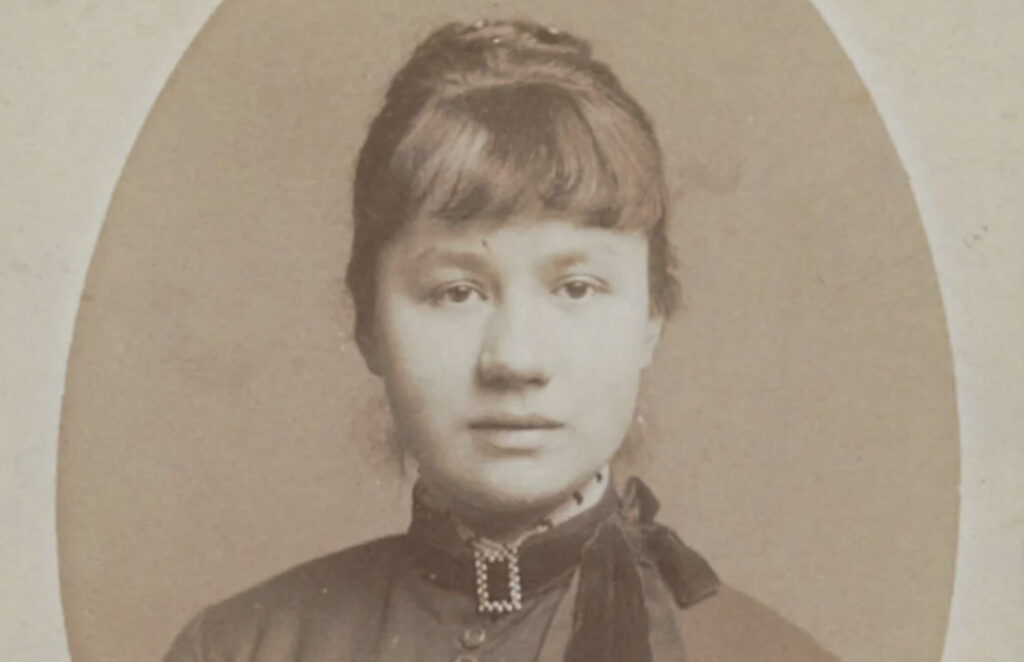Vincent van Gogh was not born today, but this story is very much about him as well as Johanna van Gogh-Bonger, who was born October 4, 1862. She was born in Amsterdam, and by the time she was 22 was teaching English at a boarding school. Around that time she was introduced to Theo van Gogh. Theo was Vincent’s brother, and the two were very close.
Theo and Johanna were no more than acquaintances when, a year later, he proposed marriage. She initially rejected him, at least partly because they simply didn’t know each other very well. Theo took the next year to remedy that, and they were finally married in 1889.
Theo van Gogh was an art dealer in Paris, and Johanna moved to Paris to reside with him. She knew perfectly well that Theo supported his artist brother, Vincent, although it’s unclear whether she met Vincent before he became her brother-in-law.
The van Goghs had a baby they named Vincent Willem, after Theo’s brother, who became the baby’s godfather. During that period everyone in the family communicated through letters — a lot of letters — and Johanna saved all the correspondence. This became important later on.
After Vincent died in 1890, Theo organized an exhibition of paintings, but even though he was a successful art dealer, Vincent van Gogh’s work was well out of the mainstream and attracted very little attention. Besides that, the “exhibition” was not very prestigious; it happened in Theo and Johanna’s apartment.
Theo had been very close to Vincent and became despondent after his brother’s death. So despondent, in fact, that Johanna worried about his health. She wanted to move him from Paris to Amsterdam, where she thought the medical care was better, but could not manage it. Instead, she convinced a Dutch physician to visit them in their Paris home. While the physician, Frederik van Eeden, was there, Johanna showed him Vincent’s paintings and van Eeden later wrote about them enthusiastically. Johanna gave him one; The Sower, and he proudly displayed it to friends, who apparently were also enthusiastic.
Despite treatment by van Eede and other physicians, Theo died six months later. This may have fed Johanna’s determination to continue her husband Theo’s work promoting Vincent’s art, attributed even by the doctors to Theo’s profound grief. He had also had syphilis, which may have had something to do with it. Johanna, who had not been infected, became determined to continue Theo’s work establishing Vincent as a successful artist. And, of course, to demonstrate how important Theo had been to Vincent.
Johanna van Gogh needed a way to support herself and her son, so she moved with hundreds of van Gogh paintings and sketches back to the Netherlands where she worked as a translator, and strengthened her contacts in the art world. She also wrote books reviews, primarily for feminist journals, and helped found the Amsterdam Social-Democratic Women’s Propaganda Club. It was a women’s socialist organization intended to improve education and working conditions for women.
She worked continuously to raise awareness of Vincent van Gogh as an artist. This initially annoyed some of the people — well, the men — in the art world. One critic complained: “Mrs Van Gogh is a charming little woman, but it irritates me when someone gushes fanatically on a subject she knows nothing about, and although blinded by sentimentality still thinks she is adopting a strictly critical attitude. It is schoolgirlish twaddle, nothing more.” She kept going, though, using both the art itself and the hundreds of letters she’d saved (remember those?) in which Vincent had explained to his family what he was doing artistically.
After the turn of the 20th Century, Johanna van Gogh’s work started to succeed. She organized an exhibition of Vincent’s art in Berlin in 1914, and published three volumes of van Gogh’s letters that same year. In 1915 she moved to New York for three years, translated the letters into English, and organized an art show on Fifth Avenue. Her son Vincent continued the work after her death in 1925, resulting (in part) in the construction of the Van Gogh Museum in Amsterdam.
Johanna van Gogh has been the main character in at least three novels, two biographies, plays, a rock musical, and two documentaries (so far). Another movie is still in production in 2024.

